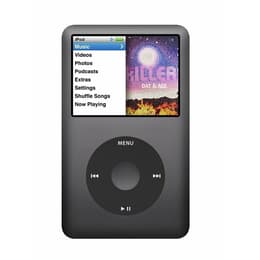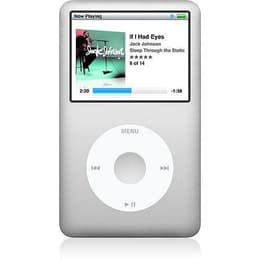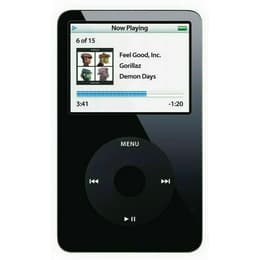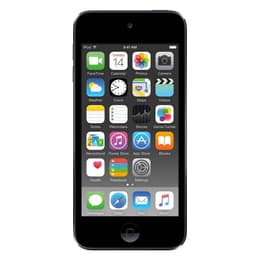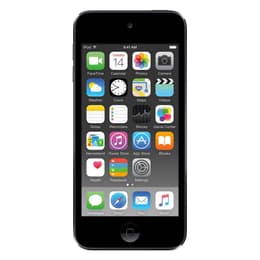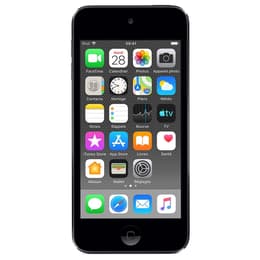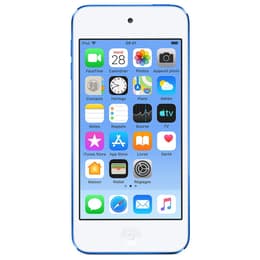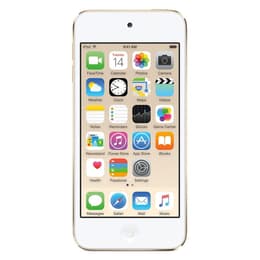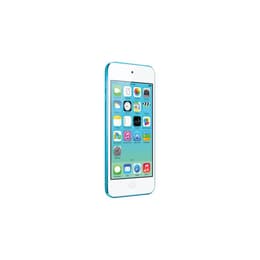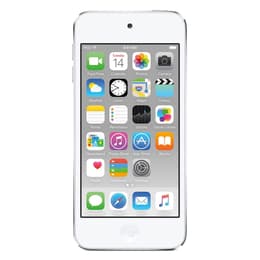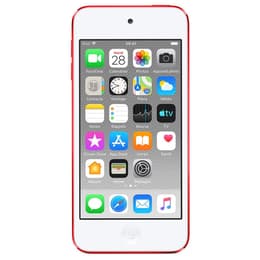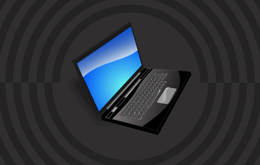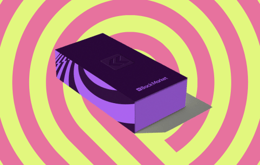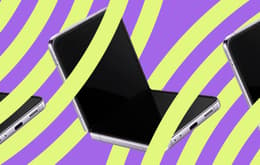
Even though Apple discontinued its iconic MP3 player, the iPod’s appeal remains strong. People continue to appreciate the iPod’s simple, offline music library that's 100% reliable. In 2001, the first iPod revolutionized personal tech and digital music, paving the way for the iPhone — arguably the most popular tech in human history.
In celebration of its legacy, let's take a scroll down memory lane and look back at its history.
2001: The birth of an icon
Today, many would struggle to imagine that the iPod was met with heavy criticism when it was first launched. Apple is such a massive brand today that every product launch is a highly anticipated event. However, it wasn't all roses from the beginning. When the first iPod came out, many couldn't understand what separated it from other MP3 players apart from its price tag. Steve Jobs had a plan, though.
Let's travel back to 2001. The record business was in freefall, and digital piracy was rampant. Record labels were in panic mode before the iPod arrived in October 2001. In its 2001 annual report, the record company trade body IFPI called it a turbulent year and blamed CD burning and file sharing for a revenue slump. Remember Napster? It was setting the pace for online music streaming, and the industry responded in the only way it understood — litigation rather than innovation.
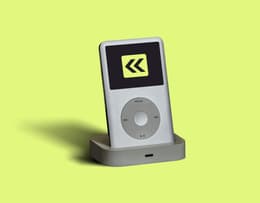
Apple iPod classic in a docking station.
Enter Steve Jobs. In the reveal presentation for the iPod, Jobs underscored to his audience that no company had found the recipe for digital music yet. While plenty of music players were available, none had emerged as the frontrunner. All lacked one thing or the other, and Apple designed the iPod to meet this challenge. It was a highly portable, high-capacity music player with the lowest price per song. While it cost about $400 at launch, it stood out from everything available back then. Finally, the music industry had a way out of the ever-growing crisis, and it came in the shape of a white device the size of a deck of cards.
At first, the iPod received a lot of mixed reactions, as evidenced by the forum reactions to Steve Jobs' 2001 product reveal presentation. Most critics said it was nothing new, and the $400 price tag was too expensive. Some even called the now-revered Steve Jobs crazy for developing another more expensive MP3 player, hoping it would take off. Turns out they were in for a surprise — a big one.
2003-2006: The era that defined the iPod's legacy
The first iPod launched in October 2001 was the size of a deck of cards, weighing 6.5 oz. The compact, all-white MP3 player had 5GB of storage that could hold and play up to 1,000 songs, unmatched by any other MP3 player in 2001. The classic line iPod set the design standard for later iPods. It was rectangular with square screens and a scroll wheel with a center select button. The first iPod also had buttons around the scroll wheel — a feature that would last until 2004.
Although the new iPod had many advantages, it also had drawbacks. It only worked with Mac computers and relied on iTunes, a then-basic music management software for transferring songs to the device (iTunes was poor initially). On the flip side, it was a world leader. The iconic scroll wheel was like nothing other MP3 players had, and the iTunes software grew to be very user-friendly, allowing users to sync music on their computers with their iPods.
By 2003, the third generation of the iPod was on the market, and the iPod was well on its way to becoming a cultural icon. Apple made hardware and software improvements to the iPod, making it compatible with Mac and Windows PCs. The white earbuds — we’re all familiar with those — that shipped with the iPod quickly became a status symbol, to the point where people wearing white earbuds were targeted by muggers in the hopes of stealing their iPod. Oprah even famously listed the iPod in her 2005 list of Favorite Things, giving away dozens of the iconic MP3 player to Hurricane Katrina volunteers.

The sleek and colorful iPod nano 4, a compact music player, redefined portability and style.
The iTunes store got even better, launching a couple hundred thousand songs, each priced just under a dollar at $0.99. By the time 2004 was rolling in, iPod users had downloaded over 25 million songs from iTunes, defying the skepticism that it wouldn't manage to compete with “free” pirated music. This marked a turning point in digital music and a groundbreaking milestone for Apple.
As mentioned earlier, music piracy was a big issue in the 90s and early 2000s. Apple saw an opportunity and seized it. Apple argued that most people would buy music if it was cheap and easy to pay for. The iTunes store proved this accurate, and it was one of the things that really kicked the iPod into the stratosphere. Users loved the iPod for its simplicity and convenience, and the iTunes store had everyone's favorite music in one spot. Beyond essentially saving the music industry, Apple also pioneered the shuffle function in digital music, a feature now used everywhere.
In the following years, the iPod's popularity skyrocketed, and Apple diversified its lineup, launching the iPod mini, iPod shuffle, iPod nano, and new generations of the classic iPod. The modern versions added color displays, and users could watch movies and play games on them, subtly foreshadowing the role smartphones would later play as an all-in-one media powerhouse. By 2005, over 10 million iPods had been sold worldwide, and the popular music player drove Apple to its highest profits yet. Despite early doubts, Apple's compact music player didn't just join the digital music world — it put on a crown and ruled it.
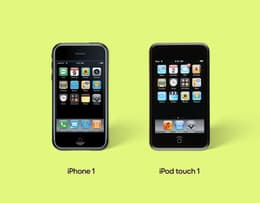
The first-generation iPod touch and the original 2007 iPhone.
2007: The beginning of the end?
2007 marked a turning point for the iPod and the tech world. Apple released two devices: the iPod touch and the iPhone. While the iPhone wasn't a direct replacement for the iPod, it laid the foundation for the future of mobile devices. On the other hand, the iPod touch introduced new features, including the now-standard full touchscreen. Its capabilities were expanded beyond a simple music player, and users could now access games and apps, surf the web, and even take photos with the new device (basically, everything an iPhone does except having cellular capabilities).
In a way, the iPod touch's release sealed the iPod's fate. Then the iPod touch dug its grave by paving the way for the iPhone. It was like a preview of what was to come, and while it was great, it ultimately set the stage for its own decline. The iPhone was clearly the next step, taking the iPod touch's tech and adding it to the only other mobile device used by people: their cellphones. Don't get me wrong — the iPod touch was a massive hit. In fact, iPod sales peaked in 2008, with about 55 million units sold that year, but the winds of change were blowing.
Smartphones with advanced music features and streaming services like Spotify gradually eroded the iPod's market share. Apple responded in the way it knows best — with innovation. Some older models were redesigned to be more modern, with the iPod nano gaining touchscreen capabilities and a sleek, compact body. The iPod touch also continued to evolve, becoming an affordable alternative to the iPhone, particularly loved for gaming and educational purposes.
Despite Apple's efforts, the decline of the iPod was all but assured. Smartphones offered more music playback functionality, and with the internet getting bigger and better, streaming services offered vast music libraries on demand. The result? A slow but steady decline in sales, and in September 2014, the unthinkable (but totally predictable) happened — Apple discontinued the classic iPod. The iPod nano and shuffle were next in July 2017, leaving only the iPod touch to soldier on. The iPod touch continued to receive updates until May 2019, and in May 2022, Apple officially discontinued the last iPod standing. By the time it was discontinued, the iPod touch had gone through seven generations in its 12-year lifespan. And at its farewell party, one question remained: why was the iPod needed when it was now part of the iPhone? This marked the end of an era.
A look back at every iPod ever made
In October 2001, Steve Jobs revealed that Apple was venturing into the music industry and unveiled the first iPod. It was a decision that not only gave a lifeline to the struggling music industry, but also shaped the future of music streaming. Here's an overview of every iPod ever made.
2001-2014: The iPod classic
The iPod classic, or the original iPod, debuted in October 2001. It was the first of its kind, but hardly unique, as MP3 players had been around for a while. However, it brought significant innovations, packing just the right set of features in a compact body. A 5GB iPod classic could hold and play a whopping 1,000 songs, an unimaginable feat at a time dominated by disk players. It also introduced intuitive controls and a 10-hour battery life that helped propel it to success. It was revamped over the next two generations, and its capacity increased tenfold. In 2003, Apple introduced iTunes to the device, allowing users to easily purchase and add songs. The fourth-generation iPod classic launched in 2004, featuring a touch-sensitive click wheel, a shuffle feature, and a color display. The fifth generation (2005) iPod classic came with a larger screen, video playback capabilities, and 80GB of storage. Two years later, in 2007, the sixth and final generation of the iPod classic was released with 160GB of storage, and this model was available until 2014 when it was retired.
iPod classic | ||
|---|---|---|
iPod Generation | Release date | Features and functionality |
Gen 1 | October 2001 | 5GB and later 10GB storage |
Gen 2 | July 2002 | Scroll wheel, 10 to 20GB storage |
Gen 3 | April 2003 | Click wheel navigation, 10 to 40GB storage |
Gen 4 | July 2004 | Image display, 30 to 60GB storage |
Gen 5 | October 2005 | Black and white color options, video playback, 30 to 80GB storage |
Gen 6 | September 2007 | Black and silver color options, 80 to 160GB storage |
2004-2006: The iPod mini

The first-generation iPod mini, Apple's compact and colorful take on the classic iPod.
The short-lived iPod mini debuted in January 2004 and was about half the weight of a regular iPod (the iPod classic). It was the first iPod that featured a click wheel with buttons integrated into it, providing one-handed navigation capabilities, and could hold up to 1,000 songs. The device was available in five colors: silver, gold, pink, blue, and green. The second generation debuted in 2005, available in only four colors: silver, pink, blue, and green, and was the final iPod mini released, with the iPod nano replacing it.
iPod mini | ||
|---|---|---|
Generation | Release date | Features and functionality |
Gen 1 | January 2004 | Five color options (gold, silver, blue, green, pink), 4GB storage |
Gen 2 | February 2005 | Four color options (silver, pink, blue, green), 4 to 6GB storage |
2005-2017: The iPod nano
The iPod nano debuted in September 2005. It featured a flash memory instead of a hard drive and could hold up to 2,000 songs in its 4GB storage. It was famously called a “full-featured iPod in an impossibly small size” by Steve Jobs. It improved over the next few generations, getting a larger screen, aluminum casing, and expanded storage. The fifth generation had a mic, camera, speaker, and the much-awaited FM radio, which had been missing from previous iPod models. The seventh generation was its last; by then, the iPod nano was entirely touchscreen. The iPod nano was retired in 2017.
iPod nano | ||
|---|---|---|
Generation | Release date | Features and functionality |
Gen 1 | September 2005 | Black and white color options, 1 to 4GB storage |
Gen 2 | September 2006 | Four color options (blue, pink, silver, green, black), 2 to 8GB storage |
Gen 3 | September 2007 | Video playback, six color options (silver, black, blue, green, pink, red), 4 to 8GB storage |
Gen 4 | September 2008 | Curved display, FM tuner, eight color options (black, purple, silver, green, yellow, orange, pink, blue), 8 to 16GB storage |
Gen 5 | September 2009 | Expanded display, FM radio, camera, live pause, eight color options (black, silver, red, blue, green, orange, pink, purple), 8 to 16GB storage |
Gen 6 | September 2010 | Smaller size, speakers, camera, no video, 8 to 16GB storage |
Gen 7 | September 2012 | Large display, video playback, Bluetooth, FM radio, 16GB storage |
2005-2017: The iPod shuffle

The first-generation iPod shuffle, Apple's screen-free, ultra-portable music player.
The iPod shuffle was the smallest offering in Apple's lineup, following a path similar to the iPod nano's. It debuted in January 2005 and was the first iPod to not feature a display. It only had a rocker ring and a play/pause button at the center. The rocker ring, a circular control pad around the play/pause button, let you adjust the volume and skip tracks by pressing its edges. This was also the smallest iPod in terms of song capacity, holding about 240 songs. The subsequent few iterations saw it lose the navigation wheel and then gain it back, with the storage capacity undergoing similar changes — expanding to 2GB, then 4GB, and then back to 2GB. Its fourth and last generation debuted in 2010 and was discontinued in 2017.
iPod shuffle | ||
|---|---|---|
iPod Generation | Release date | Features and functionality |
Gen 1 | January 2005 | Flash memory, 512MB to 1GB storage |
Gen 2 | September 2006 | Five color options (pink, green, blue, silver, orange), 1GB and later 2GB storage |
Gen 3 | March 2009 | Bigger size, no navigation wheel, 2 to 4GB storage |
Gen 4 | September 2010 | Smaller size, navigation wheel, 2GB storage |
2007-2022: The iPod touch
The iPod touch is the final and most advanced iPod. It debuted in 2007 alongside the iPod nano (third generation) and, crucially, the iPhone — the device that would pull the plug on the iPod era. The iPod touch was almost identical to the iPhone and even ran the same operating software, with only a few features like cellular capabilities missing. It offered the same 3.5-inch touchscreen, iOS apps, web browsing, and Wi-Fi capabilities. 2008 was an excellent year for the iPod and for Apple in general. iPod sales hit a peak of 55 million units, with the iPod touch leading the way. However, with the iPhone developing just as fast, sales began dwindling in 2009, with the iPhone replacing the iPod as Apple's bestseller.
The iPod touch got better, faster, and feature-rich over the next few generations, and by 2010, it had a Retina Display and a front-facing (selfie) camera. There were two more generations of the iPod touch before its final generation debuted in 2019. These introduced an expanded display and up to 128GB of storage. Since the final generation debuted in May 2019, it was surprising that there hadn't been any updates since 2015. This device mainly targeted parents looking to get their kids a smartphone with limited functionality, and the iPod touch was perfect. Three years later, the curtain fell on the iPod.
iPod touch | ||
|---|---|---|
iPod Generation | Release date | Features and functionality |
Gen 1 | September 2007 | Touchscreen, Wi-Fi, 8 to 32GB storage |
Gen 2 | September 2008 | Aluminum casing, built-in speaker, 8 to 64GB storage |
Gen 3 | September 2009 | 32 to 64GB storage |
Gen 4 | September 2010 | Front-facing camera, Retina Display, 8 to 64GB storage |
Gen 5 | October 2012 | Larger display, 16 to 64GB storage |
Gen 6 | July 2015 | 16 to 128GB storage |
Gen 7 | May 2019 | 32 to 256GB storage |
The impact of the iPod
The iPod was, once upon a time, the absolute must-have device, and its impact can still be felt today. In many ways, it is responsible for how we consume music today and the rise of digital media. The iPod enabled people to have massive libraries of music with them, accessible anywhere, anytime. Early versions of the iPod lacked wireless access, but they ingrained the idea of limitless music choices in people's minds. Later models, like the iPod touch, introduced wireless access, allowing users to connect to Apple's vast music library. These innovations paved the way for streaming platforms, where, sadly, the iPod just couldn't keep up. So, while we bid adieu to the iPod knowing it was the right time to let it retire, we do so knowing that if it weren't for the iPod, so much tech that we've come to love wouldn't exist today. Perhaps the iPod's most significant legacy is its testament to the power of design, simplicity, and a user-focused experience.
Have we seen the last of the iPods?
Unfortunately, it's improbable that Apple will be bringing back the iPod. The iPod has evolved into a software, and its modern iteration is Apple Music. However, thanks to secondhand marketplaces like Back Market, you can still get your hands on one of the greatest MP3 players to ever be made, with professionally refurbished iPods available at a reduced price. In fact, many audiophiles are getting their hands on refurbished iPods from Back Market, with sales data showing a steady rise since 2022. The iPod may be long gone, but its melody lingers.
